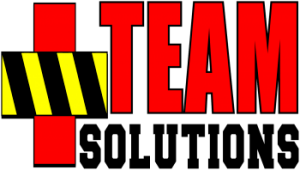Lost Little Timmy Deserves Our Best: Why SAR Training and Certification Matter More Than Ever
When someone goes missing, whether it's a child lost in the woods or a hiker overdue in rugged terrain, we don’t have time for confusion, bureaucracy, or uncertainty. We need responders who are trained, trustworthy, and truly ready to act.
That’s why Search and Rescue (SAR) certification matters—and why becoming Mission Ready is more than just a title. It’s a responsibility.
If you're new to SAR or unsure what training and certification you really need, you're not alone. In this post, we’ll demystify the path to SAR readiness and help you avoid the most common missteps that waste time, energy, and credibility.
What Does It Mean to Be "Mission Ready" in SAR?
Mission Ready isn’t a trademark. It’s not a certificate. It’s a mindset—and a measurable state of readiness that allows others to trust you in high-consequence situations.
Becoming Mission Ready involves three key components:
- Qualification Training
- Certification
- Standards Alignment
Let’s walk through each of them.
1. Qualification Training: The Foundation
Not all training is created equal. Qualification training is the kind of training that prepares you to perform real tasks in real conditions—not just pass a quiz or check a box.
"If you want to build tall, build deep." — The Skyscraper Analogy
In SAR, you need depth of training that supports your growth in the field. This includes:
- Virtual and in-person learning
- Solo practice and team drills
- Building toward awareness → knowledge → skill
Online-first SAR training (like the one offered by TEAM Solutions) lets you build a flexible foundation you can expand on in the field.
2. Certification: Proving You Can Deliver
Certification is how you show others you’ve completed credible training. But be careful:
- Certification is not the same as competency. Most certificates simply confirm you passed a course.
- External evaluations are more trusted than self-assessments.
- Skill-based certification (not just awareness or knowledge) builds true credibility.
Some well-known certifying bodies include:
- NASAR
- MRA
- FEMA EMI
- TEEX
- TEAM Solutions (yes, that’s us)
We recommend a blended approach: collect credible certificates and document your progress using tools like Position Task Books (PTBs).
3. Standards: The Rallying Point
A standard is the benchmark you align with. Think of it as the "flag raised on the hill" that everyone rallies around.
In SAR, you may align with:
- FEMA's NIMS Resource Typing
- NFPA or ASTM standards
- A standard created by your local AHJ (Agency Having Jurisdiction)
- Or your own internal team standards
Certification says you met a requirement.
Standards define what that requirement should be.
Many high-functioning teams create their own readiness standards, blending national guidance with operational reality.
Online SAR Training That Actually Works
There are plenty of online SAR courses out there, but few are designed with real-world deployment in mind.
Our course—Search and Rescue (SAR) Certification Essentials: Training, Certification & Standards—was built specifically to:
- Clarify the training/certification/standards maze
- Speak to new and emerging SAR responders
- Provide a solid, scalable learning experience
- Include a final quiz and Certificate of Completion
[Enroll now] or [Browse all SAR courses]
Lost Little Timmy Deserves Our Best
This isn’t about red tape. It’s about trust.
If someone you love went missing, would you want a responder who "kind of" knew what they were doing?
Or someone who’s been trained, tested, and trusted to act?
When the tailgate drops, the B.S. stops.
Become the responder your team and your community can count on.
Your Next Step
- Ready to get Mission Ready? [Start the course now]
- Want to explore all our SAR training options? [View our course catalog]
- Looking for team-wide solutions or memberships? [Join TEAM Solutions SAR Memberships]
- Rather hear a short podcast interview on this topic instead? Click below to listen.
Stay ready. Serve better. And never stop training.
